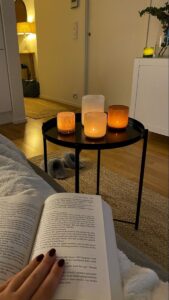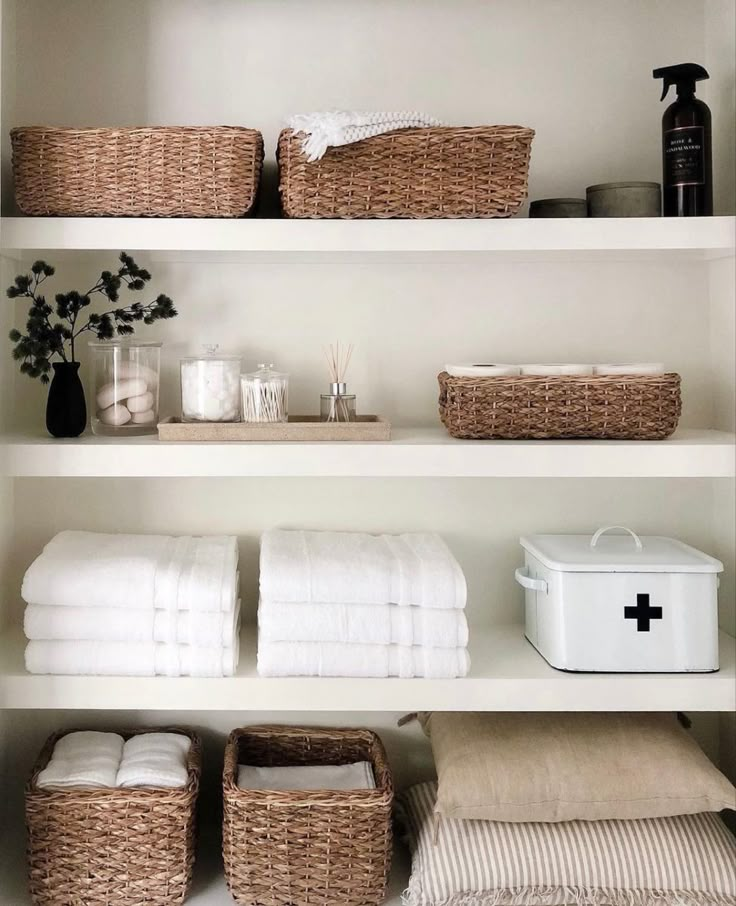10 Practical Ways to Calm Your Mind and Find Peace in Stressful Times

There are days when I feel like the world is moving too fast. My phone won’t stop buzzing, the laundry keeps piling up, and my to-do list feels endless. It’s in those moments that I notice my chest tightening, my breathing becoming shallow, and my thoughts racing in circles. Overwhelm doesn’t knock politely—it barges in and takes over if I let it.
I’ve learned, though, that I don’t have to stay in that place for long. Through practice and intention, I’ve discovered simple ways to calm my mind, even in the middle of chaos. And I want to share those steps with you—because if they’ve helped me find peace, I know they can help you too.
In this post, I’ll guide you through 10 practical ways to calm your mind. They don’t require hours of meditation or expensive retreats. These are things you can do right now, in the middle of a busy day, to find your center again. And yes, I’ll also share a few of my favorite tools and little comforts that support me on this journey—things like journals, teas, and even a weighted blanket that have made a real difference in how I relax.
So if you’ve been feeling stretched thin or pulled in too many directions, let’s walk through these steps together. My hope is that by the end, you’ll have a personal toolbox you can reach for whenever you need to calm your mind and restore peace.
Step 1: Deep Breathing – My Instant Reset
The very first thing I do when I feel overwhelmed is to breathe. It sounds too simple, right? But the truth is, when I’m anxious, I often realize I’ve been holding my breath without even noticing. Shallow breathing feeds stress, while deep breathing interrupts it.
Here’s my go-to technique: I inhale slowly through my nose for four counts, hold my breath for four, and then exhale gently through my mouth for six counts. I repeat this cycle three or four times. Within a minute, I can literally feel my heart rate slowing down, and a sense of calm washes over me.
Sometimes, I enhance this little ritual by adding a drop of lavender or eucalyptus essential oil into a diffuser. The scent immediately anchors me in the present moment, and it’s like my body receives a message: “It’s okay—you’re safe.” If you want to try the same, you can explore a simple essential oil diffuser like this one: essential oil diffuser.
Breathing doesn’t fix the world outside me, but it does shift the world inside me. And that’s often all I need to start finding clarity again. This is one of the quickest and most reliable ways I know to calm your mind.
Step 2: Step Away and Change Your Scenery
When stress builds up, staying glued to my desk or trapped in the same room only makes things worse. Sometimes the best thing I can do to calm my mind is to step away for a few minutes and change my environment.
It doesn’t have to be complicated. I might go stand by the window and let the sunlight touch my skin. Other times, I slip on my shoes and take a quick walk around the block. Just the act of moving my body and seeing something different shifts my perspective.
Nature, especially, works wonders. If I can, I like to step outside and listen to the birds, feel the breeze, or look at the trees. There’s something grounding about realizing that life goes on peacefully around me, no matter how busy my thoughts are.
When I can’t get outside, I sometimes create a “mini escape” by listening to nature sounds—rainfall, ocean waves, or a crackling fire. A good pair of noise-cancelling headphones helps me block out distractions and immerse myself in calm:noise-cancelling headphones
It’s amazing how five minutes of stepping away can refresh my energy. It’s like hitting a reset button for my brain.
Step 3: Write It All Down – Emptying My Mind onto Paper
One of the biggest reasons I get overwhelmed is that I try to keep too much in my head. All the tasks, worries, and reminders swirl together until it feels unbearable. The best medicine I’ve found for this mental clutter is simply writing it all down.
I grab a notebook and do a “brain dump.” I don’t worry about grammar or order—I just let every thought spill onto the page. Sometimes I list everything I need to do, other times I write about what’s bothering me emotionally. The act of transferring my thoughts from my mind onto paper is incredibly freeing.
Not only does this help me organize my priorities, but it also quiets the noise inside. Once it’s written down, my brain no longer needs to hold onto it, and I instantly feel lighter.
I’ve found that using a dedicated gratitude or reflection journal makes this practice even more powerful. Writing down three things I’m grateful for at the end of a stressful day shifts my focus from chaos to calm. If you want a tool that supports this habit, I recommend trying a simple guided journal like this one: gratitude or reflection journal
Journaling has become one of my favorite ways to calm my mind because it gives me both clarity and emotional release. It’s like opening a window in a stuffy room—the air feels fresher afterward.
Step 4: Drink a Glass of Water to Calm Your Mind
It’s surprising how often my overwhelm is amplified by something simple: dehydration. When I feel anxious, I sometimes realize I haven’t had enough water all day. A tall glass of water can reset my body and refresh my mind.
I keep a water bottle nearby as a reminder, but I also love to sip herbal teas when I need comfort. A warm cup of chamomile or lavender tea soothes me from the inside out. One of my favorites is a herbal tea sampler like this: herbal tea sampler
Staying hydrated might sound basic, but it’s one of the most effective ways to physically and mentally calm your mind.

Step 5: Practice the “5-4-3-2-1” Grounding Technique
When my thoughts race out of control, I turn to a grounding exercise that brings me back to the present moment. It’s called the 5-4-3-2-1 technique, and it’s incredibly simple:
5 things I can see
4 things I can touch
3 things I can hear
2 things I can smell
1 thing I can taste
This pulls me out of my spiraling thoughts and back into reality. I’ve used it in stressful situations like waiting for big news or calming down before a meeting.
What I love most about this practice is that it requires nothing but awareness. Wherever I am, I can pause and walk through the steps. By the end, my nervous system feels calmer, and my mind is quieter.
This is a practice I recommend to anyone who needs to calm your mind quickly, especially if anxiety tends to take over.
Step 6: Stretch Your Body and Release Tension
Stress doesn’t just live in my head—it shows up in my body too. My shoulders hunch, my jaw tightens, and my back aches. Stretching is my way of telling my body and mind to let go.
Sometimes I do a full yoga session, but even a two-minute stretch at my desk makes a huge difference. Rolling my shoulders, reaching my arms overhead, or bending forward loosens the tension I didn’t realize I was holding.
A good yoga mat has been one of my favorite tools to encourage this habit: yoga mat. Having a dedicated space to stretch
reminds me that my body deserves care, especially when my mind feels heavy.
Moving my body gently helps me release what I’m holding inside. It’s another beautiful way to calm your mind while also caring for yourself physically.
Step 7: Listen to Calming Music
Music is powerful to calm your mind—it can change my mood in seconds. When I need to unwind, I put on a calming playlist or soft instrumental music. Sometimes I choose nature sounds, other times gentle piano or acoustic tracks.
I’ve noticed that music doesn’t just distract me; it actually soothes my nervous system. Within a few minutes, I feel more centered. I often pair this with journaling or deep breathing, and the combination works wonders.
For the best experience, I love using quality headphones to block out background noise.They let me create a little cocoon of calm wherever I am.
Music is one of my favorite tools to instantly calm your mind and shift into a peaceful state.

Step 8: Disconnect from Screens
As much as I love my phone and laptop, I know they’re often the source of my stress. Constant notifications, endless scrolling, and the pressure to keep up with everything can make my mind feel overloaded.
That’s why I give myself screen breaks. Even ten minutes without looking at a screen helps me feel calmer. I use that time to stretch, sip tea, or simply sit quietly.
Sometimes I place my phone in another room to make it easier. The silence feels strange at first, but then I notice how peaceful it is. This pause gives my brain room to breathe, and it’s one of the best ways to calm your mind in today’s digital world.
Step 9: Do One Small Task
When my to-do list is overwhelming, I’ve learned to stop looking at the whole mountain and just take one small step. Maybe I wash the dishes, fold a load of laundry, or reply to one email.
That single completed task gives me a sense of progress. It quiets the voice in my head saying, “You’ll never get it all done.” Instead, I start to believe, “I can handle this, one step at a time.”
This simple mindset shift helps me calm my mind by turning chaos into something manageable. Small wins lead to momentum, and momentum leads to peace.
Step 10: Practice Gratitude
Finally, one of the most powerful practices for me has been gratitude. When I stop and name the good things in my life, my perspective shifts instantly.
I often write three things I’m thankful for in my journal at night. Sometimes it’s something big, like family; sometimes it’s small, like a warm blanket or a kind word. But every time, it lifts my mood.
A dedicated gratitude journal makes this practice easier: gratitude journal . Seeing my blessings written down reminds me that even on hard days, there is light.
Gratitude doesn’t erase stress, but it transforms how I experience it. It’s a gentle, powerful way to calm your mind and invite joy back in.
Extra Practices for Long-Term Calm Your Mind
While these ten steps are my go-to practices, I’ve also found a few long-term habits that keep me steadier overall:
Good sleep – Using a weighted blanket has helped me fall asleep faster and wake up more rested: weighted blanket.
Mindful routines – Building calming rituals into my day, like morning journaling or evening tea.
Yoga and meditation – Even short sessions make a big difference in how I handle stress.
Aromatherapy – Diffusing essential oils in the evening signals my body that it’s time to relax.
Limiting multitasking – Choosing to focus on one thing at a time keeps me grounded.
These aren’t quick fixes, but they create a foundation of peace that makes it easier to calm your mind whenever overwhelm strikes.
My Favorite Tools That Support Calm
Here are a few items that have made my personal calm practices even more effective (affiliate suggestions):
Essential Oil Diffuser – Creates a peaceful atmosphere
Weighted Blanket – Helps with restful sleep and relaxation
Gratitude Journal – Encourages reflection and positivity
Herbal Tea Sampler – Comfort in a cup
Noise-Cancelling Headphones – For music or nature sounds
Yoga Mat – Encourages stretching and gentle movement
These aren’t “must-haves,” but they’ve been helpful companions on my journey to calm.
✨ This blog contains affiliate links, which means I may earn a small commission if you purchase through them—at no extra cost to you.
✨ Thank you so much for supporting my blog and my work—it truly means the world to me!
❓ FAQ: Calm Your Mind
1. What does it really mean to calm your mind?
To calm your mind means to shift from a state of stress and racing thoughts into one of peace, clarity, and presence. It doesn’t mean ignoring your problems, but rather giving your nervous system a chance to reset so you can respond with more balance.
2. How can I calm my mind quickly when I feel overwhelmed?
Quick methods include deep breathing, stepping away from the situation, journaling your thoughts, or practicing the 5-4-3-2-1 grounding technique. Even just five minutes of intentional pause can calm your mind and restore clarity.
3. Are there natural remedies to calm your mind?
Yes! Herbal teas like chamomile or lavender, aromatherapy with essential oils, and using a weighted blanket at night can all support relaxation and help calm your mind naturally. These small comforts create a soothing environment for your body and thoughts.
4. Can journaling help calm your mind?
Absolutely. Journaling clears mental clutter by moving your thoughts from your head onto paper. A gratitude journal is especially powerful because it shifts your focus from stress to appreciation.
5. How often should I practice calming techniques?
Every day, if possible. Think of calming your mind as regular self-care—just like drinking water or brushing your teeth. Small, consistent practices build resilience so stress doesn’t take over as easily.
6. Is meditation the only way to calm your mind?
Not at all. Meditation is powerful, but it’s just one tool. Movement, breathing, gratitude, music, and even small tasks like tidying up can help calm your mind. The key is to find what works best for you.
Conclusion
Overwhelm happens to all of us, but we don’t have to live in that space. By practicing deep breathing, stepping away, journaling, stretching, and embracing gratitude, I’ve learned to calm my mind and find peace even in stressful times.
These steps aren’t about perfection—they’re about gentle, intentional choices that help me reset and return to myself. And if I can do it, so can you.
So the next time you feel weighed down, choose just one of these practices. Take a deep breath, sip some tea, write down your thoughts, or stretch your body. Little by little, you’ll notice the shift. You’ll find that calm is always within reach.
Because the truth is, learning to calm your mind isn’t about escaping life’s challenges—it’s about discovering the strength and peace that’s already inside you. 🌿
If you enjoyed these calm your mind practices, you might also love my post on Simple Home Routines for a Stress-Free Day.
For more science-backed techniques to manage stress and calm your mind, check out the resources at Mayo Clinic.
📖 Read My Book
If you enjoyed the calm your mind and want to go even deeper, I’d love to share my book with you: The Calm Life: A Year-Round Minimalist Self-Care Guide.
In this guide, I open my heart and share simple, seasonal rituals that have helped me calm my mind, simplify daily routines, and create more balance throughout the year. It’s like having a gentle companion reminding you that peace is always within reach.
👉 You can explore more about the book here
Disclaimer: This post may contain affiliate links. That means if you click and make a purchase, I may earn a small commission at no extra cost to you. I only recommend products I truly love and believe add value to your life. Thank you for supporting The Detangled Nest — it helps me continue creating free content for you. 💕




1 Comment